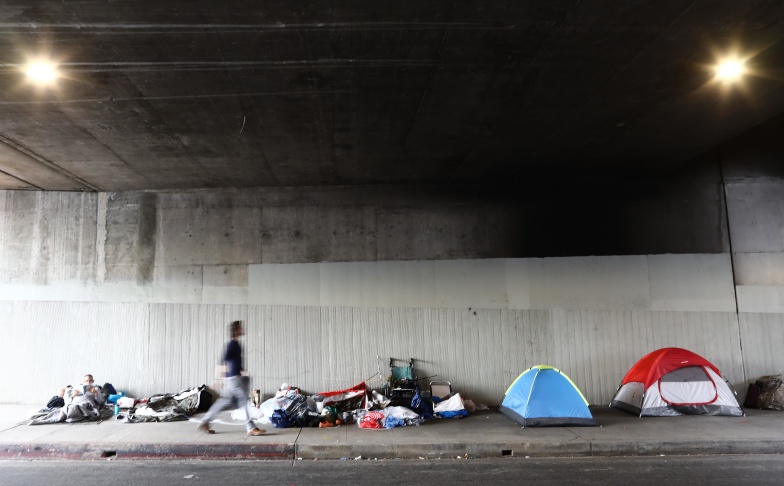In the United States today, homelessness continues to remain one of the most visible and critical social issues, impacting hundreds of thousands of individuals across the nation. Homelessness is often perceived as a direct result of personal failings rather than the failings of societal structure and government policy; in fact, many prefer to claim that homelessness is an inevitable consequence as the housing crisis continues to escalate. What has truly failed is the ability to curtail the continued escalation of the homelessness crisis. Lack of government intervention continues to perpetuate homelessness, and oftentimes, this lack of interference is motivated by aims to impose social control. By prioritizing economic interests to support mechanisms of social control, these policies inadvertently utilize homelessness as a tool to maintain existing socioeconomic dynamics. Understanding these policies’ intentional and unintentional impacts is crucial to understanding the broader socio-economic forces contributing to homelessness in America.
Homelessness can look vastly different—from the visible populations in urban centers to the less visible, whether it be transient or episodic homelessness; the implications of homelessness remain the same. Rather than simply lacking basic housing, homelessness entails social alienation. What most often forget about housing is that it often provides access to a community. When people lose access to those connections and belonging to a community, they, in tandem, lose access to a community and the potential resources it may provide, often leading to isolation. Social isolation is often furthered by policies enforced to target the homeless. These laws may include the Sit-lie law, which regulates sitting and lying in public spaces, and vagrancy laws, related to begging or being idle without visible means of support. According to the National Law Center on Homelessness and Poverty, approximately 47% of the 197 U.S. cities observed have “anti-homeless” laws. As a result of these policies, homeless people are prone to arrest for sitting or “loitering” in a public place for too long. These policies not only criminalize homelessness but also enforce the stigma associated with being homeless. Policies that criminalize homelessness are an instrument of social control, serving as an example and motivation to work. In addition, municipalities enforce these policies through police and security personnel who monitor and manage the visibility of homeless people, further stigmatizing and marginalizing this population. These policies may also expose the homeless population to violence from not only law enforcement but also the general public. According to a study reported in the article “Exploring the Experiences of Violence Among Individuals Who Are Homeless Using a Consumer-Led Approach,” which surveyed 500 individuals across five cities in 2014, approximately half of all participants experienced violence. Moreover, those who become homeless often find themselves barred from accessing basic medical services as most hospitals and clinics do not take in patients without insurance. This means that while nearly half of the homeless population endure violence, they also lack access to the necessary medical services. This stigma reinforces societal prejudices and perpetuates a cycle where homeless individuals are continually marginalized and deprived of opportunities to improve their circumstances. The resources allocated to policing and managing homelessness could be more effectively used to address its root causes. Instead, municipalities devote time to targeting the homeless population, not only through policy but also through “hostile architecture.” Also known as a fairly new form of anti-homeless infrastructure, where public spaces are specifically designed to stop homeless people from sitting down or sleeping in certain areas. Examples of these types of infrastructure may include adding dull spikes to spaces under highways or bars on benches that may prevent someone from lying down. This type of infrastructure serves as a deterrent to social mobility in certain areas, as the homeless population is prevented from accessing certain public spaces. Keeping the less privileged and homeless concentrated in certain areas rather than others enforces economic disparities and social hierarchies. By making it more undesirable for certain socioeconomic groups to move to certain areas, social control can be enforced through the homeless population. While many doubt that the government would go so far as to enforce socioeconomic divisions, many also fail to recognize an entire industry surrounds homelessness, including shelters, social services, and non-profits. This large industry creates jobs and relies on continued funding, which can lead to a reluctance to solve the problem permanently. Giving the US government the purpose and means to perpetuate homelessness to enforce social control.
The stigma surrounding homelessness as an issue and being homeless is used as a rather significant factor in subsidizing government economic interest. As previously mentioned, rather than homelessness simply meaning a lack of stable housing, being homeless entails being cut off from society. In addition to being denied access to necessary services, it is likely, as discussed earlier, that many anti-homeless laws are imposed and enforced in cities. The government’s preference for high-rent housing markets and policies limiting the development of affordable housing exacerbates homelessness. According to the National Low Income Housing Coalition, “For every 100 extremely low-income households, there are only 29 adequate, affordable, and available rental units.” This shortage of affordable housing is a direct consequence of government policies prioritizing economic gains over social welfare. Government funding priorities further illustrate the financial interests that perpetuate homelessness. Historically, significant funds have been diverted from social welfare programs to other areas, such as military spending. For instance, during Ronald Reagan’s administration, substantial cuts were made to social welfare programs according to “Reaganomics,” or “supply-side economics,” including affordable housing funding. Reagan claimed to have saved federal funding, while in reality, the funding for social welfare was rather invested elsewhere, such as the US military, to increase its industrial capacity. This reallocation of resources has long-term effects, diminishing the support available for low-income individuals and increasing the likelihood of homelessness. President Ronald Reagan was not the only president to have adopted a limited intervention policy in social welfare; Herbert Hoover’s lassiez-faire towards the economy exacerbated the effects of the Great Depression. His perception of the economy dates all the way to the Gilded Age Social Darwinism, applying the concept of “natural selection” to the economy, enforcing the idea that the disadvantaged are essentially deserving of their circumstances. This systematic pattern of lack of government intervention has perpetuated homelessness and continues to. In reality, the US government often relies on lower socioeconomic classes to support the economy, as they are often willing to work for lower wages in factories. These hiring processes date back to the Gilded Age when workers were often mistreated and forced to work in unsafe environments. When citizens are willing to work and have to work paycheck to paycheck to prevent homelessness, it becomes easier to exert social control. The US government relies on people struggling to meet their basic needs as they cannot afford the time to mobilize and demand political change, so they contribute just enough, establishing social welfare programs that never create any large-scale impact or improvements to the economy. As seen in President Franklin D. Roosevelt’s New Deal programs, while they provided jobs, his program produced minimal impact, as taxes were levied on basic items, such as candy, cigarettes, matches, candy, chewing gum, alcoholic beverages, soft drinks, cars, and many more. Moreover, his programs aimed to tackle unemployment, created jobs at the expense of others, destroying industries as factories were forced to raise wages above market level. Rendering companies were unable to hire more, making his programs largely ineffective. In order to ensure a homeless population, the government must continue to prioritize its economic interests.
As previously mentioned, while many claim individual choices or circumstances contribute to homelessness, this perspective overlooks the systemic factors that create homelessness. “Personal failings” are often also a product of minimal funding in social welfare, such as mental health services. While not all circumstantial experiences can be counted as a result of a lack of government support or funding, government policy often facilitates factors contributing to or causing homelessness. Personal failings alone cannot account for the widespread and ongoing nature of homelessness in the United States. Inadequate housing, insufficient social services, and punitive policies highlight the broader socio-economic forces contributing to this issue. Lack of government intervention does not mean a lack of government responsibility for the housing crisis, as many of these issues are highly addressable. However, homelessness as an issue is likely never to be solved on a larger scale, as they are a means of social control and preserving the government’s economic interests.
These policies contribute to the ongoing homelessness crisis by maintaining social and economic dynamics that disadvantage the homeless population. Government policies perpetuate homelessness by prioritizing economic interests and social control. It is crucial to understand that these policies, often designed to maintain economic dynamics, inadvertently use homelessness as a tool to maintain social control. Acknowledging the role of individual choices in homelessness is essential, but it is equally crucial to recognize the significant impact of government policies in creating circumstances that further the homelessness crisis. By addressing the systemic issues and prioritizing social welfare over economic interests, meaningful progress can be made in reducing homelessness. Government policies perpetuate homelessness by prioritizing economic interests and social control. Maintaining economic disparities and social hierarchies through the perpetuation of homelessness preserves the economic interests of the government at the expense of those whom they determine deserve less.












